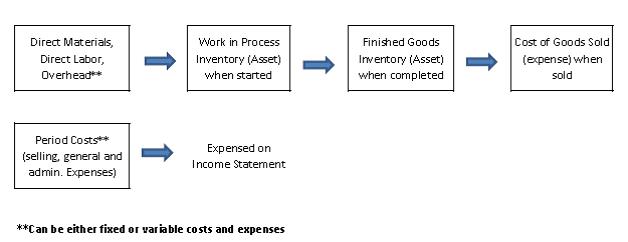
As such, the funds can be factored into determining your organization’s working capital or used as collateral for short-term loans. In the current asset section of its 31 January 2020 balance sheet, total receivables are listed net at $3,673 million. Let’s look at how accounts receivable is recorded and reported on the financial statements. Typically customer credit limits are set and approved by the seller’s credit department depending on the creditworthiness of the customer. Companies have to be careful before granting credit to customers that they don’t know or have experience with since these customers can default of the debt and never pay for the product they purchased. When it’s clear that an account receivable won’t get paid, we have to write it off as a bad debt expense.
How accounts receivable automation software can help improve your A/R workflow
- Our mission is to empower readers with the most factual and reliable financial information possible to help them make informed decisions for their individual needs.
- Company B owes them money, so it records the invoice in its accounts payable column.
- Aim to make payment easy instantly but also for those paying their debt.
- Determine a process for performing accounts receivable, and stick to it.
Once the plumber completes the job, they give the invoice of $538 to the customer for the completed job. That customer’s bill of $538 will be recorded by the plumber as accounts https://www.quick-bookkeeping.net/future-value-of-annuity-formula-with-calculator/ receivable while they wait for the customer to pay the invoice. With modern accounting software, you can automate invoice delivery and keep track of all your pending payments.
Accounts receivable FAQ

Adam received his master’s in economics from The New School for Social Research and his Ph.D. from the University of Wisconsin-Madison in sociology. He is a CFA charterholder as well as holding FINRA Series 7, 55 & 63 licenses. He currently researches and teaches economic sociology and the social studies of finance at the Hebrew University in Jerusalem. Once you have fixed the credit period for your clients make sure to follow up on them regularly until they pay their dues.
Definition of accounts receivables

This content is for information purposes only and should not be considered legal, accounting, or tax advice, or a substitute for obtaining such advice specific to your business. No assurance is given that the information is comprehensive in its coverage or that it is suitable in dealing with a customer’s particular situation. Intuit Inc. does not have any responsibility for updating or revising any information presented herein.
How Are Accounts Receivable Different From Accounts Payable?
The receivable turnover ratio, otherwise known as debtor’s turnover ratio, is a measure of how quickly a company collects its outstanding accounts receivables. The ratio shows how many times during the period, sales were collected by a business. The receivable turnover ratio, otherwise known as the debtor’s turnover ratio, is a measure of how quickly a company collects its outstanding accounts receivables. The accounts receivable team is in charge of receiving funds on behalf of a company and applying it toward their current pending balances.
Accounts receivable vs. accounts payable
To calculate your AR turnover ratio, divide your net credit sales by the average accounts receivable. Your accounts department can also use insight from accounts receivable processes for proper bad debt provision and find ways to cushion your business from financial losses. Your growing business can increase the likelihood of receiving customer payments on time by improving how you conduct the process.
Another option for encouraging clients to pay invoices on time is to charge late fees. Customers at a grocery store or restaurant what is equity method of accounting pay right away with cash or a card. But businesses that sell big-ticket or bulk items might not get paid for months.
It is critical for any enterprise to handle receivables effectively as they offer additional capital to fund operations and allow the enterprise to reduce its net debt. Net receivables are shown as an aggregated total on the company’s balance sheet. The gross receivables are listed first and are followed by the allowance for doubtful accounts. The allowance for doubtful accounts is a contra-asset account, as it reduces the balance of an asset. With today’s technological advances, companies can receive payment before shipping an order or performing a service.
Typically, accounts receivables are due in 30 to 60 days and are considered overdue past 90. And even if your business hasn’t yet received the cash for an invoice, it’s still considered an asset because clients are legally obligated to pay within the agreed-upon period. Not every business has the cash to pay for purchases when they’re received. Resellers and manufacturers, for example, often need to make credit-based purchases to obtain the raw materials required to generate later profits. Conversely, with the right policies in place, you can recognize safer bets that you might have previously overlooked. Any measure that your business takes to monitor or capture the revenue from credit-based purchases will require technology and personnel—resources that you have to pay for.
The company will have to make a policy decision on whether or not to report an interest expense related to the accounts receivable. Management uses the allowance for doubtful accounts to define accounts receivable that will likely not be collected and actively manage the ones that will. At the end of each period, management must evaluate the list of customers and balances on the accounts receivable aging report to identify which ones are past due and unlikely to be collected. Generally, the older and more overdue a receivable becomes, the less likely it will ever be collected.
The value of your invoice, which represents a month’s worth of work, is part of your accounts receivable. A high bad debt-to-sales ratio (above 25%) shows you need to act immediately to start issuing invoices proactively and making regular follow-ups to improve collection. To calculate the Best Possible DSO, divide https://www.kelleysbookkeeping.com/ the current accounts receivable by the total credit sales, then multiply by 365. To calculate your DSO, divide your total accounts receivable by total credit sales, then multiply by 365. Good accounting requires that an estimate should be made for any amount in Accounts Receivable that is unlikely to be collected.
As a result, AR ensures your business maintains a consistent cash flow and thrives. The amount that the company is owed is recorded in its general ledger account entitled Accounts Receivable. The unpaid balance in this account is reported as part of the current assets listed on the company’s balance sheet.
However, because the amount is for services or goods delivered, the customer is legally obligated to pay you, making this an asset (not a liability) in your balance sheet. With automation, you can put the AR process on autopilot by creating custom templates and setting up features like recurring invoices or auto-pay. Using automation also saves time that the AR department could use to collect overdue invoices and field other tasks. Automating processes is essential for businesses today and the easier it is for customers to pay you the more likely it is that you’ll collect payment timely. Traditionally, to track accounts receivable, the AR department would generate invoices manually using basic accounting software or paper processes.
A manufacturer will record an account receivable when it delivers a truckload of goods to a customer on June 1 and the customer is allowed to pay in 30 days. From June 1 until the company receives the money, the company will have an account receivable (and the customer will have an account payable). Entering accounts receivable is normal practice for a business any time services are rendered and before an invoice is created and delivered to the customer. Your business needs to keep track of outstanding invoices, and one way it can do that is by allocating payment terms to each client. That’s why your AR department should prioritize accounts that make up most of the accounts receivable balance—and once that’s done, you could shift your focus to other outstanding payments.

